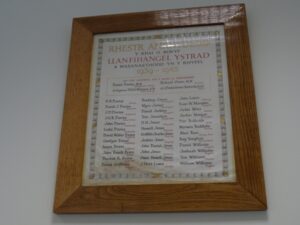Felinfach is situated on the A482, which runs between Lampeter and Aberaeron, along the Aeron Valley. The men of the area who fell during both World Wars are commemorated on War Memorials situated within the Memorial Hall at Felinfach. These memorials also name the men of the area who served and returned. Many thanks to Mike Berrell for the photographs of the memorials.
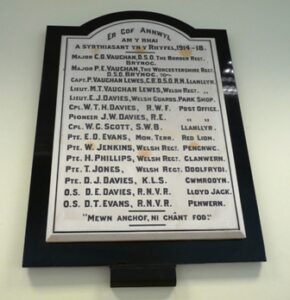
The Great War, 1914-1918
David Ernest Davies, Ordinary Seaman, Wales Z/5376, Royal Naval Volunteer Reserve. David was born on 22 October 1894, the son of David Davies, of Lloyd Jack, Felinfach. He served with the Royal Navy at the R.N. Depot, Crystal Palace. David became ill towards the end of the war, and died on 13 October 1918. He was 23 years old, and is buried at Llanfihangel Ystrad (St. Michael) Churchyard.
David John Davies, Private, 38552, King’s Shropshire Light Infantry. David was born at Trefilan, and enlisted at Felinfach into the Training Reserve Battalion. He was posted to France early in 1918, joining the 7th Battalion, King’s Shropshire Light Infantry, which was attached to 8 Brigade, 3rd Division, at Cambrai. The Division was in the area during March, 1918 when the German Spring Offensive swept through the British lines, and saw heavy fighting in the coming weeks, before being moved to Flanders to rebuild. However the Germans switched the focus of their offensive to Flanders, and the Division was caught up in the worst of the fighting there, at the Battle of Estaires, and then at the Battles of Hazebrouck and Bethune. By now the German offensive had stalled, and the Division was moved south to take part in the great British offensive on the Somme. On 2 September 1918, 8 Brigade was tasked with the capture of the strongly defended village of Lagnicourt, part of the larger Battle of Bapaume. David was killed in action that day, and is buried at Vaulx Hill Cemetery, France.
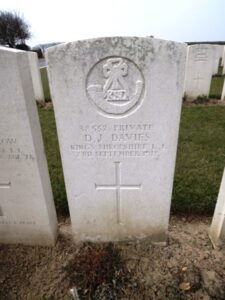
Evan James Davies, Second Lieutenant, Welsh Guards. Evan was probably born in 1900, the son of Roderick and Mary Davies, of Gartheli. The family later moved to London, and Evan enlisted there into the 28th Battalion, London Regiment (Artists Rifles) OTC. He was commissioned into the 1st Battalion, Welsh Guards, and served with them in France from 3 October 1917. The Welsh Guards were attached to the 3rd Guards Brigade, Guards Division, and Evan would have taken part in the Battle of Cambrai soon after joining them. They remained in the area over the final winter of the war, and were stationed near Gouzeaucourt when the German Spring Offensive hit the area on 21 March 1918, at the Battle of St Quentin. On the night of 27 March 1918, the Welsh Guards moved into the front line to relieve the 1st Battalion, Grenadier Guards, at Boyelles. On the following morning, 28 March 1918, the Germans launched a fresh assault on the Welsh Guards positions, and it was whilst trying to repel this attack that Evan was killed. He is commemorated on the Arras Memorial, France.
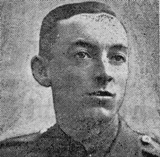
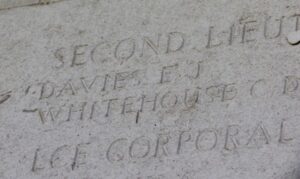
John William Davies, Pioneer, 317070, Royal Engineers. John was the son of David and Rachel Davies, of The Post Office, Felinfach. He had resided at Llandyssul prior to enlisting into the Royal Engineers at Lampeter. John was posted to the 35th Division Signal Company, which had moved to France in January 1916. They saw their first action during the Somme Offensive at the Battle of Albert. After a period of reorganisation they followed the German withdrawal to the Hindenburg Line in March 1917, and later in the year fought at the Battle of Passchendaele. Early in 1918 the Division were stationed in the area around Bapaume, and were caught there by the German Spring Offensive which was launched there on 21 March 1918. John was killed in action just days later, on 25 March 1918, aged 30. He has no known grave, and so is remembered on the Pozières Memorial, France. His brother William also fell.
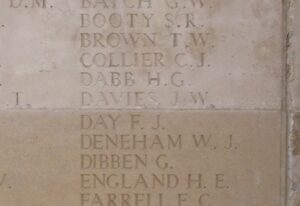
William Thomas Howell Davies, Corporal, 21820, Royal Welsh Fusiliers. William was the son of David and Rachel Davies, of The Post Office, Felinfach. William enlisted at Aberystwyth into the Royal Welsh Fusiliers, and was posted to Colwyn Bay, where he joined the 15th Battalion, Royal Welsh Fusiliers. The battalion moved to Winchester in the summer of 1915, attached to 113 Brigade, 38th (Welsh) Division. The Division had landed in France during December 1915 and had spent their first winter in the trenches near Armentieres. In June they marched south to the Somme, where they were tasked with the capture of Mametz Wood. The attack on the wood began on 7 July, but met with fierce resistance, and it took until 14 July to totally clear the wood. William was killed in action at Mametz Wood on 11 July 1916. He was 26 years old, and is commemorated on the Thiepval Memorial, France. His brother John also fell.
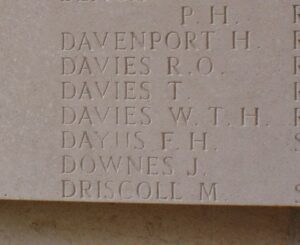
David Thomas Evans, Ordinary Seaman, Z/5377, Royal Naval Volunteer Reserve. David was born on 27 April 1899, the son of David and Mary Evans of Penwern, Felinfach. He enlisted into the Royal Naval Volunteer Reserve, and was based at the R.N. Depot Crystal Palace. David died at the Crescent War Hospital, Croydon, Surrey on 10 October 1918. He was 20 years old, and was buried at Lampeter (Brondeifi) Unitarian Chapelyard.
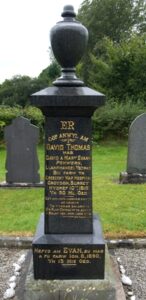
Evan Daniel Evans, Private, 227428, Monmouthshire Regiment. Evan was the son of Evan and Elizabeth Evans, of Red Lion, Felinfach. He worked as a butcher at Pentre prior to the war and enlisted there on 10 December 1915 into the 2/1st Battalion, Monmouthshire Regiment. He was posted to Lowestoft, but after over twelve months on duty took ill, and was diagnosed as suffering from rheumatoid arthritis. He was discharged from the army as medically unfit on 6 September 1917, and returned to the Red Lion, where he died of tuberculosis on 1 March 1918, aged 37. Evan is deemed as not being eligible for commemoration by the CWGC as his death is not linked to the cause of his discharge.
William Jenkins, Private, 18205, Welsh Regiment. William was born at Pencnwc, Felinfach in 1888, the son of Jane Jones and the grandson of William and Magdalen Jenkins, of Penlon, Strata Florida. He enlisted at Tonypandy on 14 October 1914 into the 13th Battalion (2nd Rhondda), Welsh Regiment, which became attached to 114 Brigade, 38th (Welsh) Division. On 2 December 1915 the battalion moved to France, and the entire Division moved to the Fleurbaix sector, where it was initiated into trench warfare. During June 1916 the Division marched south to the Somme, and on 7 July 1916 attacked Mametz Wood. The initial attack failed, and it was three days later, on 10 July, that a fresh attack was mounted. William was badly wounded within Mametz Wood, and evacuated to a dressing station outside the wood, where he died on 10 July 1916. He was 27 years old, and is buried at Dantzig Alley British Cemetery, Mametz, France.
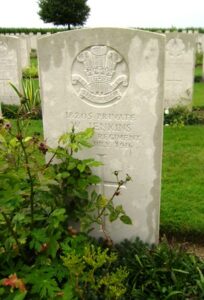
Thomas Jones, Private, 37344, Welsh Regiment. Thomas was the son of William and Jane Jones, of Ddolfrydi, Felinfach. He enlisted at Aberystwyth into the 9th Battalion, Welsh Regiment, which was attached to 58 Brigade, 19th (Western) Division. The Division moved to France during July 1915, and moved to positions north-west of Givenchy, near Loos, where it took part in the opening attack of the Battle of Loos on 25 September 1915. Thomas was killed during the build up to the attack, on 17 September 1915. He was 40 years old, and is buried at Brown’s Road Military Cemetery, Festubert, France.
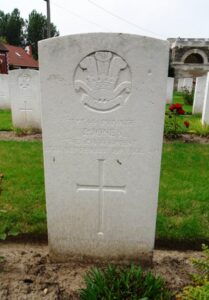
Martyn Tulloch Vaughan Lewes, Second Lieutenant, Welsh Regiment. Martyn was born in Marylebone in June 1895, to Captain Price Vaughan Lewes and Anne Josephine Lewes. Martyn was educated at Harrow, and afterwards studied at the Royal School of Mines, Camborne. After qualifying as a Mining Engineer, he travelled to Canada for a years experience before touring the world. Following the family traditions, his mother’s father was Colonel J. G. M. Tulloch of the Royal Scots, and his father’s father was Colonel John Lewes, the Hero of the Redan, Martyn joined the Officer Training Corps, and on 15 August 1914, was gazetted as a Second Lieutenant into the 3rd Battalion, Welsh Regiment. The 3rd Welsh was a Reserve Battalion that had been raised in Cardiff in August 1914 and stayed home throughout the war, acting as a feeder for other battalions of the Welsh Regiment. After training, Martyn was posted to the Monmouthshire Regiment in France. He was wounded at Ypres soon after moving to the Front, and went home on leave. He then decided to join the Royal Flying Corps, where he trained as an Observer. Martyn was posted to 25 Squadron, who were based in France from February 1916. He is reported in the Harrow Roll of Honour that he was a Pilot, and had shot down three German aeroplanes, but at the moment there is no other evidence of this to be found. Martyn was reportedly taking part in a training flight on 15 July 1916 as Pilot of an F.E.2b aeroplane. He got lost in fog over German lines, and when the fog cleared his aeroplane was hit by ‘Archie’, which damaged the landing gear. After returning to Bailleul and circling over the ground for a while, wondering how to get down, Martyn flew low to the ground and jumped out of the aeroplane. In the fall he broke his legs and suffered internal injuries, and was rushed to the Hospital at Bailleul for treatment. He sadly died of his injuries on 22 July 1916, aged 21, and was buried at Bailleul Communal Cemetery Extension, France.
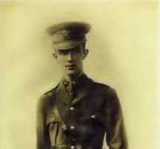
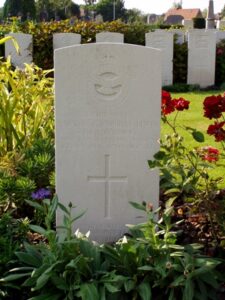
Price Vaughan Lewes, Captain, Royal Navy. Price was born on 27 February 1865 at Llanfear, Felinfach, the son of Colonel John and Mary Jane Lewes. At the tender age of 13, Price joined the Royal Navy, serving aboard the training ship HMS Britannia, under Captain E. Kelly. On 23 July 1880, Price was posted to HMS Achilles, and just two months later, at the age of 15, he was promoted to Midshipman. During August 1893, Price had been promoted to Lieutenant, and was the third most senior officer aboard HMS Blanche, which was stationed at Zanzibar. He gained the award of the Distinguished Service Order for his gallantry here. On his return home, Price married his fiancée, Anne Josephine Tulloch at Chester, on 30 April 1894, and a year later, Anne gave birth to their son Martyn Tulloch Vaughan Lewes. From this period onwards, the family often came to Laugharne when Price was on shore leave, spending their time relaxing at Hillside, the home of his friend Samitt Willimott and his family. Price became very well known in Laugharne, which had become a haven for high-ranking military officers at this time. By 1897, Price had gained command of the newly launched gunboat HMS Hazard, and took part in a Victoria Cross action at Crete. For his fine leadership in this affair on Crete, Price was promoted to Commander, by order of Her Majesty Queen Victoria. On 30 June 1905, Price was promoted to Captain in the Royal Navy, and afterwards took command of the Battleship HMS Superb, which was launched in 1909. The Superb was a Bellerophon Class Dreadnought Battleship, with a main armament of ten 12″ guns. During 1913 Price received the CB as part of the King’s Birthday Honours, to go with his Distinguished Service Order, and his Africa General Service Medal with Juba River Clasp. At the outbreak of the Great War, HMS Superb was part of the British Home Fleet. Due to the outbreak of hostilities, the Royal Navy reorganised its fleets, and the Superb became part of the 4th Battle Squadron of the Grand Fleet, which was commanded by Admiral Sir John Jellicoe aboard HMS Iron Duke. Price was on sick leave in Laugharne, but promptly resumed command of his ship HMS Superb. At the beginning of November 1914, Price was invalided to Devonport Naval Hospital, where he sadly died at the age of 49, on 10 November 1914. He lies buried in the Plymouth (Western Mill) Cemetery, Devon.
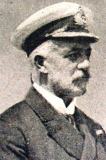
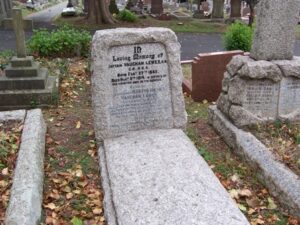
Henry William Phillips, MM, Private, 38151, Welsh Regiment. Henry was the son of Mrs. Florence Phillips, of 114, Ifield Road, West Brompton, London. He resided at Glanwern, Felinfach prior to the war, and enlisted at Aberystwyth into the 9th Battalion, Welsh Regiment, which was attached to 58 Brigade, 19th (Western) Division. The Division moved to France during July 1915, and moved to positions near Loos, where it took part in the opening attack of the Battle of Loos on 25 September 1915. The following year the Division moved to the Somme, where it took part in the second wave of the attack on Ovillers-La Boisselle on 1 July 1916, capturing the village at heavy cost. After days of continuous fighting, on 7 July 1916 the 9th Welsh took part in an attack on Contalmaison. Henry was killed during the attack that day. He was 20 years old, and is buried at Becourt Military Cemetery, Bécordel Becourt, France. Henry had been awarded the Military Medal during his time at war, probably for the Battle of Loos.
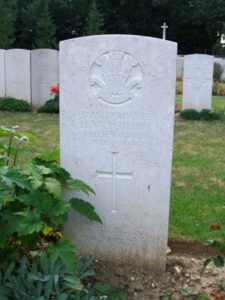
George William Scott, MM, Corporal, 27305, South Wales Borderers. George was the son of George and Emma Scott, of 43, Sitwell Street, Spondon, Derby. He resided at Llanfear, Felinfach prior to the war, working as a Coachman for the Lewes family and enlisted at Newport into the South Wales Borderers. George was posted to France in 1916 to join the 2nd Battalion, South Wales Borderers, which had arrived there from Egypt after a hard campaign in Gallipoli, attached to 87 Brigade, 29th Division. The Division took part in its first major action in France during the 1916 Somme Offensive, and fought at the Battles of Albert and Le Transloy, suffering heavy casualties. In the Spring of 1917 they fought at the Battle of the Scarpe, which was part of the Arras Offensive. George was killed here during heavy fighting at Monchy-le-Preux, on 18 April 1917. He was 40 years old, and is commemorated on the Arras Memorial, France. George had been awarded the Military Medal just prior to his death.
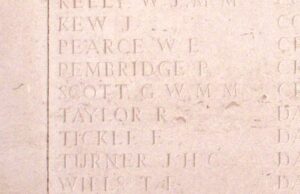
Charles Davies Vaughan, DSO, Major, Border Regiment. Charles was born on 22 August 1868, the son of Captain Herbert Vaughan, and of Julia Vaughan, of Brynog, Felinfach. Charles had served in the South African War of 1899-1901, and had been awarded the Distinguished Service Order for his gallantry there. At the outbreak of the Great War, he was in Burma with the 1st Battalion, Border Regiment. He had married Dorothy Jean Ashby at Maymyo Burma on 14 August 1914, and she returned to her home at Crabtree Cottage, Wanborough, Guildford, Surrey, whilst Charles returned with his battalion to England, landing at Avonmouth on 10 January 1915. The battalion then joined 87 Brigade, 29th Division, and on 17 March 1915 sailed from Avonmouth for arrived Alexandria. From here the Division moved to Mudros, and landed at Gallipoli on 25 April 1915. Charles was killed whilst leading his Battalion ashore at X Beach, Cape Helles on 25 April 1915. He was 47 years old, and is buried at Pink Farm Cemetery, Helles, Gallipoli. He is also commemorated on a memorial at St. Michael’s Church, Ystrad. His brother, Philip died later in the war.
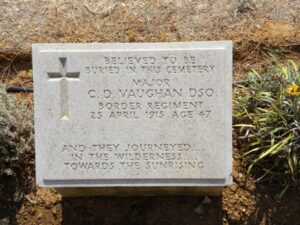
Philip Edmund Vaughan, DSO, Major, Worcestershire Regiment. Philip was the son of Captain Herbert Vaughan, and of Julia Vaughan, of Brynog, Felinfach. He married Marjorie Bennett in 1910, of Benhill Wood End, Sutton, Surrey. He was commissioned into the Worcestershire Regiment in 1894, and had served with them during the Boer War. At the outbreak of the Great War, Philip moved to France with the 2nd Battalion, Worcestershire Regiment, and fought during the retreat from Mons to the Marne with the 2nd Division. Philip fought with the Division during the First Battle of Ypres that year, and in 1915 fought at Neuve-Chapelle and Loos. By the time of the Battle of the Some in 1916, Philip was in command of the 8th Battalion, Green Howards (Yorkshire Regiment). The battalion was attached to 69 Brigade, 23rd Division. They saw their first major action at the Battle of Albert, where they captured Contalmaison. Philip was awarded the Distinguished Service Order for his bravery and leadership at Contalmaison in July 1916. The Division fought throughout the Somme offensive, and in May 1917 took part in the Battle of Messines. The Division then fought at the Third Battle of Ypres, before being sent overseas, to Italy. On 16 November 1917 concentration had been completed between Mantua and Marcaria. On 4 December the Division took over a section of front line on the Montello, relieving the 70th Italian Division, and then fought at the Battle of Asiago and the Battle of Vittorio Veneto. Philip survived the war, but had been invalided home in the last few months of the war. He died of pneumonia at Endsleigh Place Hospital, London on 5 December 1918, aged 40, and was brought home to be buried in the family vault at Llanfihangel Ystrad (St. Michael) Churchyard. There is a memorial to Philip at St. Michael’s Church, Ystrad.
World War Two, 1939-1945
Daniel Davies, Boatswain, Merchant Navy. Daniel was the Husband of Mary Davies, of Felinfach. He served with the Merchant Navy aboard the SS Henri Mory, a Swansea registered steamer, with his close friend, Richard Thomas Owen, also of Cribyn. On 26 April 1941, Henri Mory was torpedoed and sunk by the German submarine U-110 in the Atlantic. Daniel was 38 years old when he died that day, and he is commemorated on the Tower Hill Memorial, London.
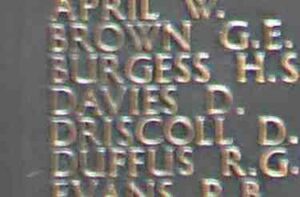
Rees Lloyd Evans, Boatswain, Merchant Navy. Rees was the husband of A. Evans, of Felinfach. He served with the Merchant Navy aboard the SS Stanholme, a London registered steamship. On 25 December 1939 Stanholme was on route from Cardiff to London with a cargo of coal when she struck a mine which had been laid by the German submarine U-33 and sank with the loss of 13 lives. Rees was 54 years old when he died that day, and is commemorated on the Tower Hill Memorial, London. Rees is not commemorated at Felinfach.
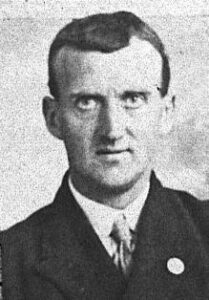
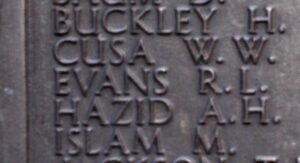
Harri Stanfield Gwyn Morgan, Lieutenant (E), Royal Navy. Harri was the son of the Reverend William Harry Morgan and Jenny A. Morgan, of Derry Ormond. He served with the Royal Navy, aboard HMS Argonaut, a Dido Class Light Cruiser. She was sent to the Mediterranean in 1942, as part of Force Q. On 14 December 1942, Argonaut was hit on the starboard side by torpedoes from the Italian submarine Mocenigo, west of Galita Island, and suffered heavy structural damage to her bow and stern structure which were blown off. The crippled destroyer was towed back to Algiers, but Harri had been killed in the explosion that day. He was 22 years old, and is commemorated on the Portsmouth Naval Memorial, Hampshire.
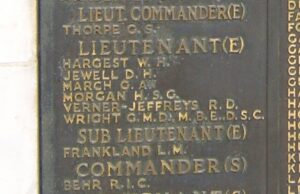
Richard Thomas Owen, Fourth Engineer Officer, Merchant Navy. Richard was the son of Griffith and Martha Owen, of Cribyn, and the husband of Sarah Owen, of Felinfach. He served with the Merchant Navy aboard the SS Henri Mory, a Swansea registered steamer, along with his close friend Daniel Davies, also of Cribyn. On 26 April 1941, Henri Mory was torpedoed and sunk by the German submarine U-110 in the Atlantic. Richard was 41 years old when he died that day, and he is commemorated on the Tower Hill Memorial, London.
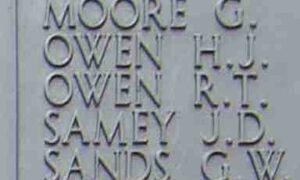
David Gomer Richards, Aircraftman 1st Class, 1211826, Royal Air Force Volunteer Reserve. David was the Son of John Thomas Richards and Olwen Richards, of Ciliau Aeron. He was serving with the Royal Air Force at Witney in Oxfordshire when he died on 5 December 1942. David was 20 years old, and is buried at Ciliau Aeron Unitarian Chapelyard.
Those Who Served, WW1, 1914-1918

Those Who Served, WW2, 1939-1945
